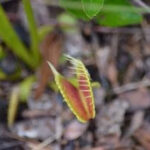Are tiny, pesky flies buzzing around your fruit bowl or hovering near your sink? You’ve likely encountered fruit flies, a common household nuisance. These little insects can appear seemingly out of nowhere and quickly become a major annoyance. The good news is, eliminating fruit flies doesn’t require expensive solutions or harsh chemicals. In fact, you probably have everything you need to create effective traps right in your kitchen.
Like many, we recently experienced a fruit fly invasion in our home. Despite years of being fruit fly-free, suddenly they were everywhere! This unexpected outbreak became the perfect opportunity to put various fruit fly elimination methods to the test. Armed with household supplies and a bit of curiosity, we experimented with seven different techniques, meticulously documenting the results. Based on our hands-on experience, we’re excited to share the most effective DIY fruit fly traps and offer proven strategies to prevent these pests from returning.
These homemade traps are incredibly easy to assemble using common, natural ingredients you likely already have. They are a budget-friendly and chemical-free approach to fruit fly control, making them ideal for any home. For those who prefer a humane approach, some of these traps even offer the option to release the captured fruit flies outdoors. Beyond traps, we’ll also delve into crucial preventative measures to stop fruit fly infestations before they even begin.
Understanding Fruit Flies: What Are They and Why Are They Here?
Fruit flies are small, winged insects that are strongly attracted to ripe and fermenting fruits and vegetables – hence their name! They also gravitate towards sugary substances and fermented drinks like beer, wine, and juice. You’ll often find them congregating around fruit bowls, garbage disposals, trash cans, and even kitchen drains. Visually, they’re about the size of a grain of rice, resembling small, tan or brownish houseflies, often with distinctive red eyes. Fruit flies are most prevalent during the warmer months, particularly summer and late fall, when fruits are abundant and ripening.
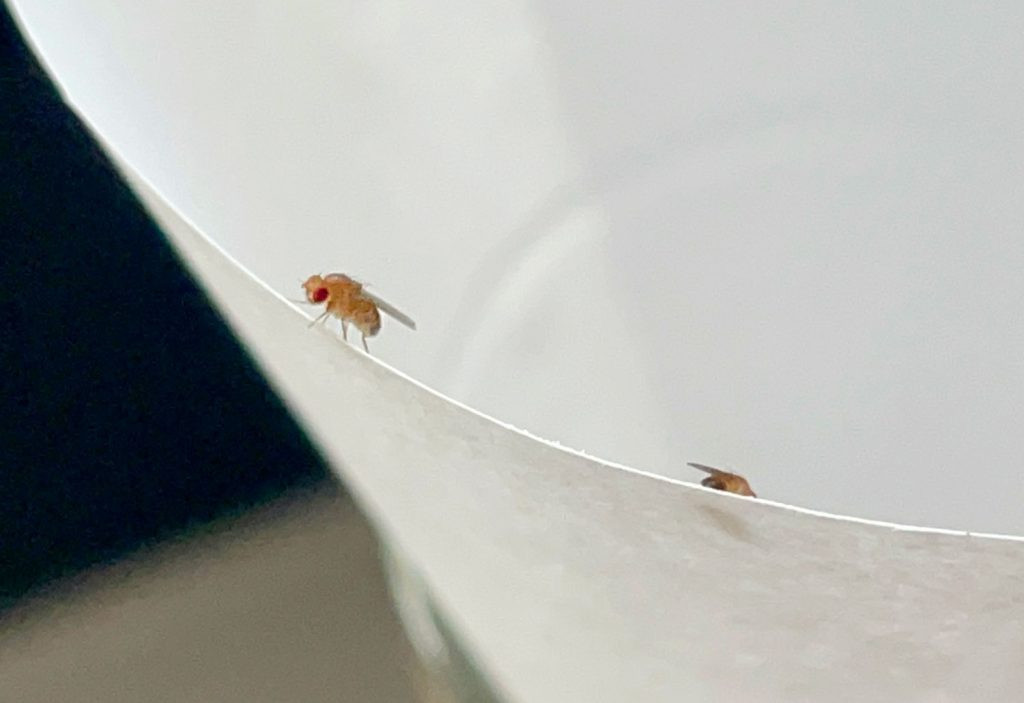 Close Up Of Fruit Fly On Paper Funnel
Close Up Of Fruit Fly On Paper Funnel
A fruit fly infestation often starts subtly, perhaps with just a few individuals hitching a ride into your home on fresh produce. However, female fruit flies are prolific breeders, capable of laying hundreds of eggs within their short lifespan. These eggs can hatch in as little as 12 hours, and the larvae can mature into adults in just a few days. This rapid life cycle explains how a small initial presence can quickly escalate into a significant swarm. Therefore, prompt action is crucial to get rid of fruit flies and prevent a full-blown infestation.
Identifying Your Pest: Fruit Flies vs. Fungus Gnats vs. Drain Flies
Fruit flies are frequently mistaken for other small flying insects that can invade homes, especially fungus gnats and drain flies. While all three are tiny and winged, accurate identification is key to choosing the most effective elimination method. The easiest way to differentiate them is by observing where you see them and what larger insect they resemble.
- Fruit Flies: Resemble small flies and are commonly found near fruit bowls, open trash cans, spilled food, or any source of fermenting food odors.
- Drain Flies: Look like tiny, fuzzy moths. They are typically spotted near sinks, drains, and damp areas in bathrooms or kitchens.
- Fungus Gnats: Appear similar to small mosquitos and are usually found around houseplants, as they breed in moist potting soil.
If you’re uncertain about the type of pest you’re dealing with, trying one of the fruit fly traps described below can serve as a diagnostic tool. If the trap attracts the insects in your home, you can confidently confirm you’re dealing with fruit flies and proceed with targeted solutions.
4 Simple DIY Fruit Fly Trap Recipes
Eliminating fruit flies is surprisingly straightforward and inexpensive. All you need are a few common household items and a bit of patience. The fundamental principle behind each of these traps is simple: attract the fruit flies with a tempting lure and then prevent their escape. We experimented with the following four DIY methods and identified a clear winner in terms of effectiveness. Since each method utilizes readily available supplies, feel free to try more than one to see what works best in your situation. Consider it a fun, mini-science experiment right in your kitchen! Here are the first four fruit fly traps we tested:
- Funnel Trap
- Plastic Wrap Trap
- Dish Soap Trap
- Rotting Fruit Trap
We’ll provide detailed instructions for each method below, along with our findings on their effectiveness. Keep in mind that some traps work faster than others, and it may take several days to fully resolve your fruit fly problem with any of these techniques. Consistency and persistence are key.
#1: The Paper Funnel Fruit Fly Trap
This classic trap design entices fruit flies into a container through a small opening at the bottom of a paper funnel. The funnel shape makes it easy for flies to enter but difficult for them to navigate back out.
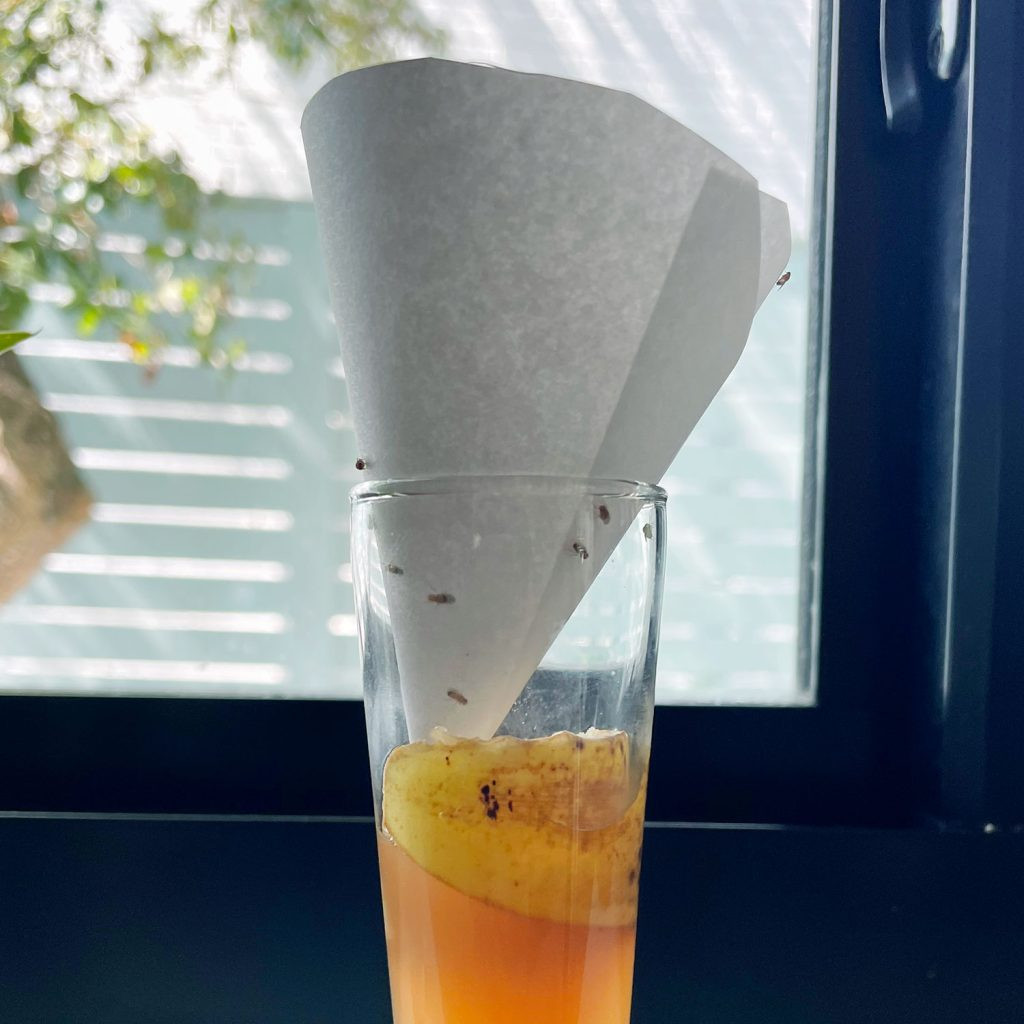 DIY Fruit Fly Trap With Paper Funnel
DIY Fruit Fly Trap With Paper Funnel
Supplies You’ll Need:
- A small, clear jar, cup, or container – ideally with a narrow opening
- A sheet of paper or cardstock
- Tape
- Scissors
- Apple cider vinegar (ACV)
Step-by-Step Instructions:
- Choose Your Container: Select a small, transparent container. An old food jar or a plastic soda bottle with the top cut off works perfectly. For this method, a container with a smaller opening is advantageous.
- Add the Lure: Pour a small amount of apple cider vinegar, old beer, or wine into the bottom of your container. The sweet, fermented scent acts as a powerful attractant for fruit flies.
- Create the Funnel: Shape a piece of paper or cardstock into a cone. The key is to create a very small opening at the pointed tip of the cone. Secure the cone shape with tape. You can create the small opening by either making a tiny hole at the tip or by leaving a very narrow gap when forming the cone. The opening should be just large enough for a fruit fly to enter, about the size of a grain of rice.
- Assemble the Trap: Place the paper funnel into the opening of your container. You might need to adjust the funnel’s width so it rests securely on the rim of the container without touching the liquid lure at the bottom. Ensure the funnel fits snugly against the container’s opening edges, preventing fruit flies from escaping through any gaps.
- Humane Release (Optional): If you prefer to release the trapped fruit flies, carefully carry the entire trap outdoors, being careful not to disturb the funnel (or the flies may escape before you get outside). Once outside, remove the funnel to allow the fruit flies to fly away.
While you can also use a store-bought funnel, you might find that the opening at the bottom of many commercial funnels is too wide, potentially allowing more fruit flies to escape the trap. A homemade paper funnel allows for greater control over the opening size.
#2: The Plastic Wrap Fruit Fly Trap
Similar to the funnel trap, the plastic wrap trap uses the enticing aroma of apple cider vinegar to draw fruit flies into the container. The plastic wrap creates a barrier with small holes, making it easy for flies to enter but challenging to exit.
Supplies You’ll Need:
- A small, clear jar, cup, or container
- A rubber band
- Plastic wrap or a plastic bag
- A toothpick
- Apple cider vinegar (ACV)
Step-by-Step Instructions:
- Select Your Container: Choose a small, clear jar, cup, or any glass container. Almost any size will work, and transparency helps you monitor your trapping progress. An old soda or beer can also work if you don’t have a clear container.
- Add the Bait: Pour apple cider vinegar into your container. The strong, sweet and vinegary scent is irresistible to fruit flies. Old beer or wine are effective alternatives, but avoid using regular white vinegar, as it’s not as attractive to them.
- Cover with Plastic Wrap: Tightly stretch plastic wrap over the opening of your container and secure it firmly with a rubber band. Saran wrap is ideal, but you can also use a piece cut from a plastic bag. Ensure the plastic wrap is taut and creates a sealed surface over the opening.
- Poke Entry Holes: Use a toothpick to carefully poke a few small holes in the plastic wrap surface. You don’t need many holes, just a few that are large enough for a fruit fly to squeeze through.
- Humane Release (Optional): To release the trapped flies, carefully take the trap outside without removing the plastic wrap (to prevent escape). Once outdoors, remove the plastic wrap to set them free.
An alternative variation of this trap involves using a metal jar lid instead of plastic wrap. You can puncture a small hole in a metal lid (like from a mason jar or old food jar) using a hammer and nail to create the entry point for the flies.
#3: The Dish Soap Fruit Fly Trap
This trap differs from the previous two as it doesn’t require a cover. Instead, it relies on the surface tension-reducing properties of dish soap to trap the fruit flies. Important note: This method is not designed for humane release, as the soap will coat and ultimately drown the flies.
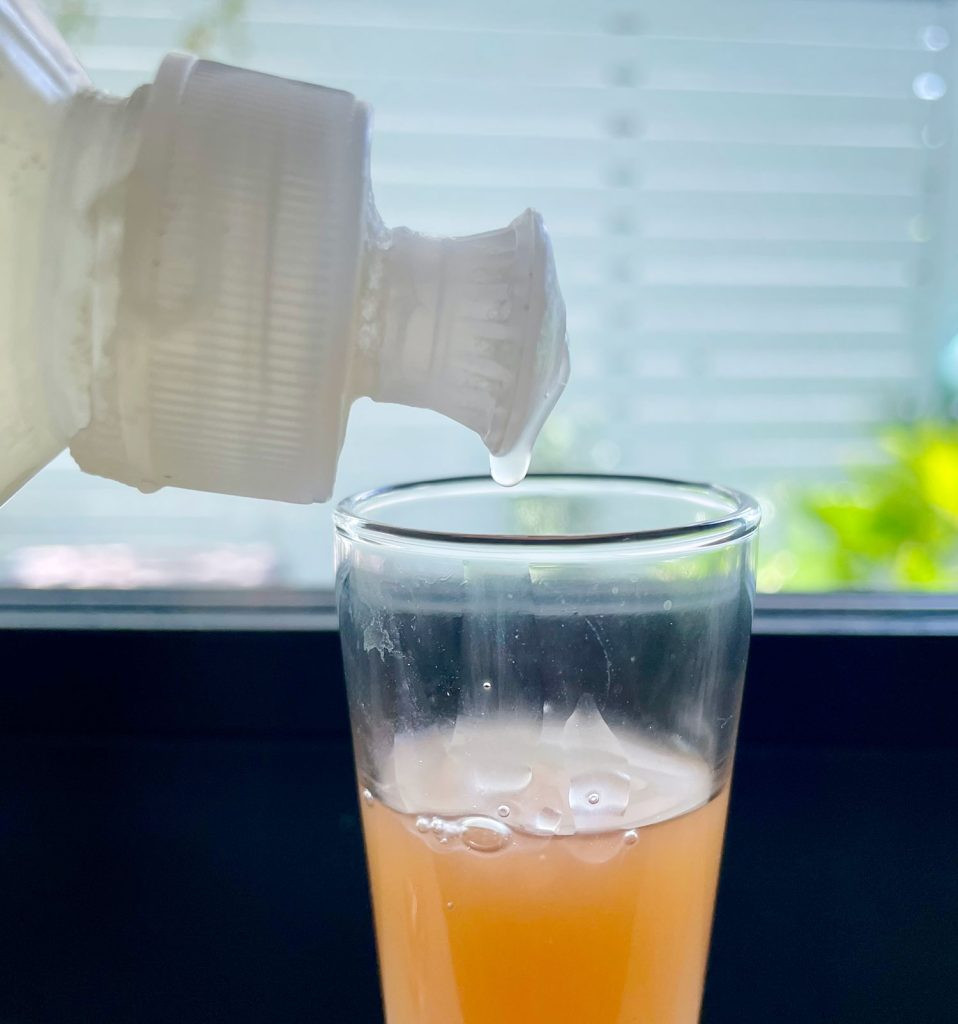 Dripping Dish Soap Into Apple Cider Vinegar For DIY Fruit Fly Trap
Dripping Dish Soap Into Apple Cider Vinegar For DIY Fruit Fly Trap
Supplies You’ll Need:
- A small container, bowl, or dish
- Dish soap
- Apple cider vinegar (ACV)
Step-by-Step Instructions – Simplicity Itself:
- Pour Apple Cider Vinegar: Fill the bottom of a small container, bowl, or dish with apple cider vinegar. Again, the scent is the key attractant.
- Add Dish Soap and Mix: Squirt several drops of dish soap into the apple cider vinegar. Gently mix the soap into the vinegar to create a soapy solution. The dish soap breaks the surface tension of the vinegar, so when fruit flies land on the mixture to investigate the scent, they will sink and become trapped instead of being able to fly away.
This dish soap technique can also be combined with the plastic wrap or funnel traps for enhanced effectiveness. Adding a few drops of dish soap to the apple cider vinegar before covering the container introduces an additional trapping mechanism.
#4: The Rotting Fruit Fruit Fly Trap
For this method, we move beyond apple cider vinegar and directly utilize what fruit flies are most drawn to: actual ripe or rotting fruit!
Supplies You’ll Need:
- A small glass jar, cup, or container
- Plastic wrap or paper funnel, depending on your preferred trap mechanism (as described above)
- A small piece of ripe or overripe fruit, such as a banana peel or apple slice
Step-by-Step Instructions:
To create a rotting fruit trap, simply replace the apple cider vinegar lure in either the Plastic Wrap Trap or Funnel Trap with a piece of banana peel, apple slice, peach slice, or other ripe fruit. You can also boost the attractant power by adding a piece of fruit to your apple cider vinegar in any of the trap designs. However, be mindful that fruit scraps will need to be replaced every day or two to prevent unpleasant odors in your kitchen as they decompose.
Determining the Best Fruit Fly Trap: Our Experiment Results
As shown in the photos, we set up four different DIY fruit fly traps to compare their performance side-by-side. The four homemade traps we tested were variations combining the techniques described above:
- Plastic Wrap Trap with banana peel
- Funnel Trap with ACV + banana peel
- Plastic Wrap Trap with ACV + dish soap
- Dish Soap Trap with ACV
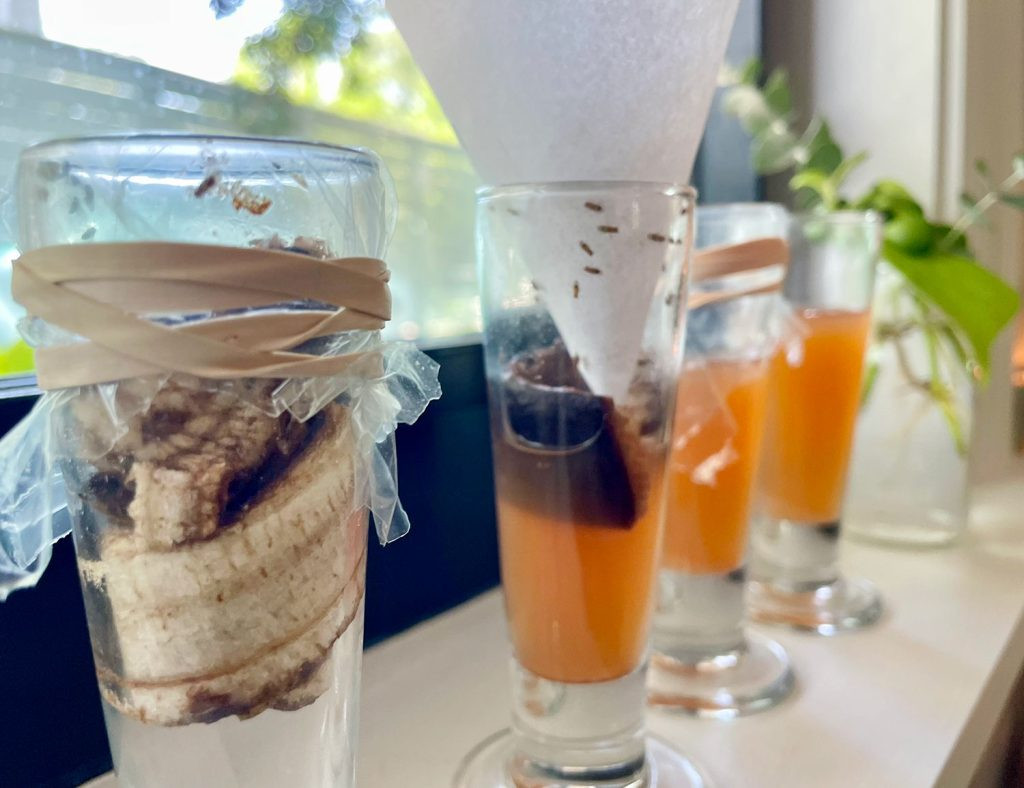 4 DIY Fruit Fly Traps Close Up
4 DIY Fruit Fly Traps Close Up
Our experiment revealed a clear trend: the type of lure was more critical than the trap design itself. Traps baited with banana peel consistently outperformed those using only apple cider vinegar. The two Plastic Wrap Traps were virtually identical in construction, but the one containing banana peel captured significantly more fruit flies than the one with ACV and soap. This suggests that while apple cider vinegar is attractive, it may be less enticing when real fruit is nearby.
Based on our findings, we recommend incorporating a piece of fruit scrap into any fruit fly trap you set up, regardless of the trap design. While we had a slight preference for the plastic wrap trap due to its ease of construction and stability (less prone to accidental spills), the key takeaway is the effectiveness of fruit-based lures. (Confession: I did knock over the funnel trap once, inadvertently releasing some captured flies back into the kitchen – oops!)
What Lures Fruit Flies Best? Fruit Bait Experiment
Intrigued by the success of fruit scraps, we expanded our experiment to determine which type of fruit is the most effective bait. We tested three readily available fruits: banana peel, apple slices, and a strawberry. Each fruit was placed in a separate Plastic Wrap Trap and positioned side-by-side on our kitchen counter for 24 hours.
While the banana peel initially seemed promising (it was the ripest of the three at the start), the results showed that fruit flies were most strongly attracted to the strawberry. The banana peel still captured a good number of flies, but the strawberry’s catch rate increased as it became softer and more fermented over time. Interestingly, the apple slices failed to attract a single fruit fly in our test!
Considering Store-Bought Fruit Fly Traps
If DIY methods aren’t working for you, or if you prefer a more convenient, ready-made solution, numerous pre-made fruit fly traps are available for purchase. These traps generally have overwhelmingly positive reviews and are typically priced under $20. Store-bought traps may be a worthwhile option if you’re seeking a solution that also targets other types of small flying insects, or if you desire a more discreet trap design compared to homemade versions.
 Collage of Storebought Fruit Fly Traps
Collage of Storebought Fruit Fly Traps
During our experiments, we purchased a pack of Terro Fruit Fly Traps to compare their effectiveness against our homemade traps. We placed a Terro trap next to our banana and strawberry traps for 24 hours to see which performed best.
Again, our homemade strawberry trap took the lead, closely followed by the banana peel trap. The store-bought Terro trap only caught a single fruit fly during this initial 24-hour period. HOWEVER…
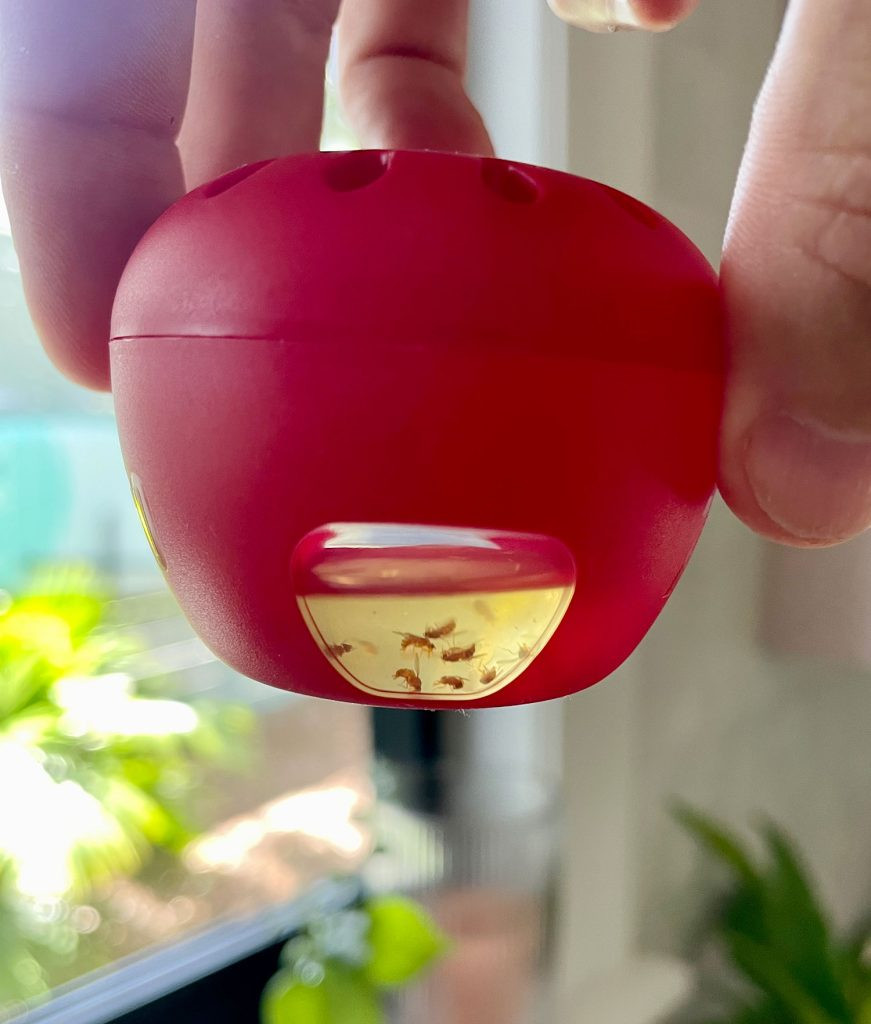 Terro Fruit Fly Trap With Dead Fruit Flies Visible
Terro Fruit Fly Trap With Dead Fruit Flies Visible
To ensure a fair comparison, we discarded our DIY traps and left the store-bought Terro trap in place for another 24 hours. Over this extended period, the Terro trap accumulated a significant number of fruit flies, as you can see in the photo. So, store-bought traps are definitely effective, just perhaps not as immediately or aggressively as our top-performing homemade traps.
Our conclusion? Store-bought traps are a good choice if you want a more aesthetically pleasing option, especially for long-term placement. However, for rapid and highly effective fruit fly elimination, our DIY traps, particularly those baited with strawberry or banana peel, proved to be the superior solution.
Preventing Fruit Flies: Stop Infestations Before They Start
While eliminating fruit flies is relatively easy, preventing them from invading your home in the first place is the ideal scenario. Here are simple yet effective preventative measures to keep fruit flies from setting up residence in your kitchen:
- Maintain Clean Kitchen Surfaces: Regularly wipe down kitchen counters, stovetops, tables, and all surfaces prone to collecting food residue or spilled liquids. Fruit flies are strongly attracted to fruit, sugary juices, and alcohol, so promptly cleaning up spills and crumbs is crucial.
- Take Out Trash Regularly: Food scraps left in your garbage can overnight can quickly turn your trash into a fruit fly breeding ground. Empty your kitchen trash can frequently, especially after preparing meals with fruit or vegetables.
- Dispose of Overripe Fruit Promptly: Monitor your fruit bowl and pantry for overripe or decaying fruits and vegetables. Discard browning bananas, soft apples, and other produce before they become a fruit fly magnet.
- Wash Produce Immediately After Bringing it Home: Fresh produce can sometimes carry fruit fly eggs or larvae from the grocery store. Washing fruits and vegetables as soon as you get home (except for delicate berries, which may spoil faster with moisture) can eliminate these potential infestations before they start.
- Refrigerate Produce When Possible: Fruit flies thrive in warmer temperatures and will not flourish in the cold. When appropriate, store fruits and vegetables in the refrigerator to deter fruit flies.
- Clean Sink Drains Regularly: Food particles and organic matter accumulating in sink drains can also attract and sustain fruit flies. Regularly run your garbage disposal and/or flush drains with hot water and a drain cleaner to eliminate potential breeding sites.
Finally, remember not to panic if you spot a few fruit flies in your home. While you should take prompt action to prevent the problem from escalating, the solutions presented here are easy to implement, effective, and fast-acting. You might even find yourself enjoying the process of becoming a fruit fly scientist, just like we did!
*This post contains affiliate links, so we may earn a small commission when you make a purchase through links on our site at no additional cost to you.
